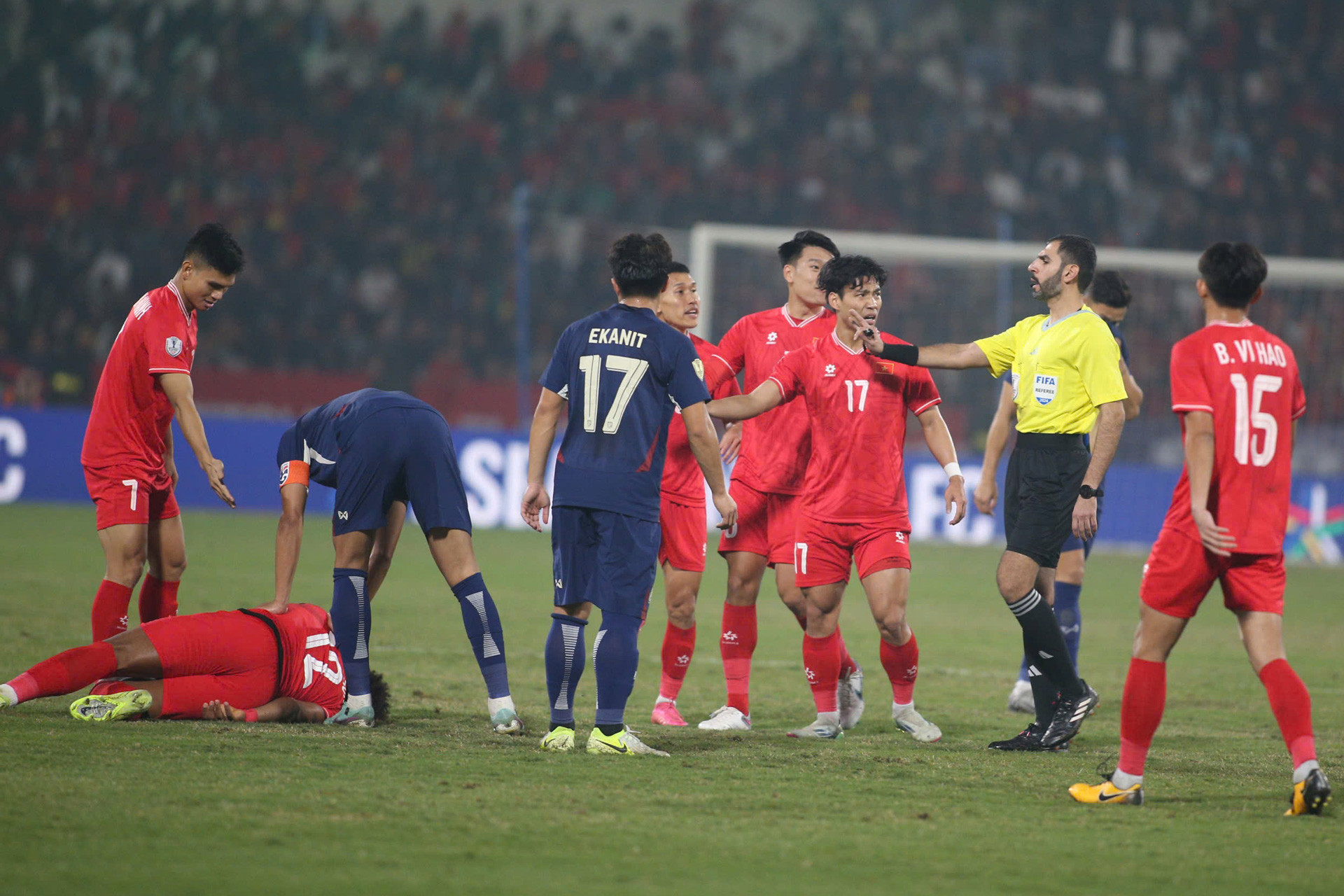
In the second leg of the ASEAN Cup 2024 final, Vietnam’s national team will face a revamped Thailand on their home turf, with the "War Elephants" expected to deploy a rough and aggressive style of play.
The roles of Supachok and Suphanat
In the first leg at Viet Tri Stadium, Thailand’s coach, Masatada Ishii, made several adjustments to his lineup to cope with the congested schedule and the strain of a grueling 120-minute semifinal against the Philippines.
However, these changes led to individual errors and an underwhelming team performance.
For the second leg at Rajamangala Stadium on January 5, Thailand is expected to make significant changes, including the return of key players Supachok Sarachat and Suphanat Mueanta, who started on the bench in the first leg.
Supachok will likely anchor Thailand’s midfield, providing creativity and structure, while Suphanat will operate as a supporting forward, linking play with striker Patrik Gustavsson and initiating attacks.
Suphanat’s impact was evident in the first leg, where his precise assist set up Chalermsak Aukkee’s header, reducing Vietnam’s lead.
Currently leading the tournament in assists with five, along with four goals, Suphanat is a critical player for Thailand. Stifling his influence will be vital for Vietnam’s defense, a task that requires a well-executed tactical plan from coach Kim Sang Sik.
Bolstering physical play
While Supachok and Suphanat focus on offensive duties, Weerathep Pomphan is expected to become a central figure in Thailand’s midfield battle.
After surprisingly starting the first leg on the bench, Weerathep was substituted in following an injury to Akarapong Pumwisat. His passing accuracy and physicality make him an ideal candidate to disrupt Vietnam’s playmaker, Nguyen Hoang Duc.
Joining him in midfield is William Weidersjo, whose Swedish roots bring a blend of stamina and strength. Both players are likely to feature in a more physical game plan to stifle Vietnam’s creativity.
Thailand's rough tactics
Thailand’s physical approach has been a hallmark of their gameplay, often crossing the line into roughness. During the first leg, several "War Elephants" players committed aggressive fouls, with center-back Pansa Hemviboon’s kick to the back of Nguyen Xuan Son drawing particular attention.
On their home turf, Thailand is expected to intensify these tactics, targeting key Vietnamese players such as Xuan Son, Hoang Duc, and Nguyen Quang Hai.
The Philippines experienced similar treatment during their semifinal match at Rajamangala, where Thailand committed 24 fouls compared to their opponent's 11.
With the possibility of reverting to a 4-1-4-1 formation instead of the 4-3-3 used in the first leg, Thailand’s strategy will likely focus on physical dominance and early pressure to secure a quick lead.
Vietnam’s response
For Vietnam, coach Kim Sang Sik must devise a strategic plan to counter Thailand’s physicality and maintain composure amidst provocation. Staying focused and disciplined will be essential to preserving their advantage and avoiding unnecessary confrontations.
The second leg promises to be a high-stakes clash, with Vietnam looking to overcome Thailand’s aggressive playstyle and secure the ASEAN Cup title.
Ngoc Huy